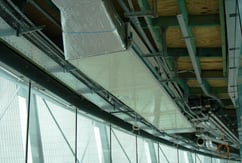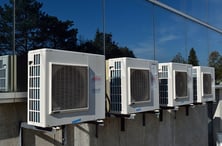Just have an energy audit done? Congratulations! It’s a great step toward saving money in both the short and long term, and toward creating a more environmentally-friendly building. But the audit is just the first step, not an end in itself. Don’t let it just sit on the corner of your desk, gathering dust! Whether it’s for business or home, here are some common-sense reminders of steps you can take to implement the audit.
- Review The Audit
The first thing to do when you receive the audit is to understand it, of course! Look over the material that the energy auditor provided you, and make sure you understand it.
In the best-case scenario, sit down with the auditor and have him or her explain the findings. Invite relevant personnel to this meeting as well, including the plant manager, heads of maintenance and others.
You might want to invite someone responsible for budgeting, as well. They’re going to have a lot of questions about why you want to spend money on these improvements, and what the benefits are. It would be easier to have the auditor on hand to explain everything.
Request the written report ahead of time so you have a chance to read it and prepare questions. Hopefully, your auditor will make an in-depth presentation and also be available and able to answer follow-up questions later.
- Set Priorities
Now that you know what the report says, it’s time to start setting priorities.
 First, are there any urgent changes that need to be made, like replacing failing equipment or repairing leaks? While it may be expensive, it’s going to much more beneficial to fix them before you have a catastrophic failure on your hands.
First, are there any urgent changes that need to be made, like replacing failing equipment or repairing leaks? While it may be expensive, it’s going to much more beneficial to fix them before you have a catastrophic failure on your hands.
Next, account for regular maintenance or replacement. Are there parts of your building or house that are nearing the end of their projected lifespans, even though they’re functioning fine right now? Are your maintenance costs on these systems rising higher and higher every year? Are parts becoming harder to find? Make sure they fit into your list, even if you’re not going to make changes immediately.
Beyond that, look at what’s going to increase your efficiency – and comfort – the most. Are you losing a lot of money as heat seeps out of a poorly-insulated room? Is your heating and air conditioning system sized appropriately for your space? What is going to have the biggest effect on your bottom line and overall indoor environmental quality?
Most importantly, don’t get overwhelmed. A good audit is going to hit on all types of issues, some large and some small. It can be intimidating trying to take it all in at once. But prioritizing will help you realize that the projects are manageable.
- Check Your Budget
Of course, your priorities are going to have to align with your budgetary constraints. Ideally, we’d just be able to afford to do it all right away. But that’s rarely realistic.
Compare your list of priorities with what you can afford. In the end, you’re probably going to have to shift some of the priorities around a bit. Along the way, keep in mind that the initial outlay is going to pay off with the savings you make in energy efficiency.
- Budget for the Big Stuff

One good idea to implement, if you haven’t already, is a capital budget. It’s common for larger businesses but is a great idea for smaller ones and homeowners as well.
There are certain elements you know are going to wear out eventually - the roof, the furnace, and many others. Plan ahead and set money aside in an account earmarked for these, so that it’s not a major drain or a surprise when the moment comes.
Again, you don’t have to do everything at once. In the long run, you’ll save money. But of course, there are costs before you get to that point. Set realistic goals and analyze when you’ll be able to afford the improvements.
- Plan The Implementation
This isn’t necessarily the last step - it goes hand-in-hand with creating your budget, really. There are, however, other elements to consider besides when you can implement your priorities.
For instance, you might not want to replace an HVAC system during the hottest or coldest months. You could end up without service for a few days, which surely would make your customers or family uncomfortable, to say the least.
Consider also how much the work will intersect with daily life and business. If the work is to be done in a mechanical room, basement or attic, you might not have much to worry about. But if it involves work in areas that get used regularly, you’ll have to plan for the best times to avoid inconveniencing people.
Similarly, will water or electricity have to be turned off for any period of time? See if you can plan that part of the work to minimize disruption.
Are you in the enviable position of implementing various phases at once? Make sure contractors coordinate to minimize service interruptions, and so that they won’t be in each other’s way!
Conclusion
An energy audit is a great start to making important changes with environmental and economic benefits. A well-done audit might look intimidating, but don’t let it just gather dust. Strive to understand it and break it down into manageable and affordable parts. Keep your goal in mind, so that you’re not tempted to give up. Your energy audit is a tool that’s going to lead to great things for your business or home.
Guest post by Bob Wells, a retired HVAC tech who now dedicates himself to sharing knowledge on his website hvactraining101.com. Bob worked over 30 years in the field, 23 of which he ran his own contracting business. Find Bob on twitter @hvactraining101 and Facebook www.facebook.com/hvactraining101.



